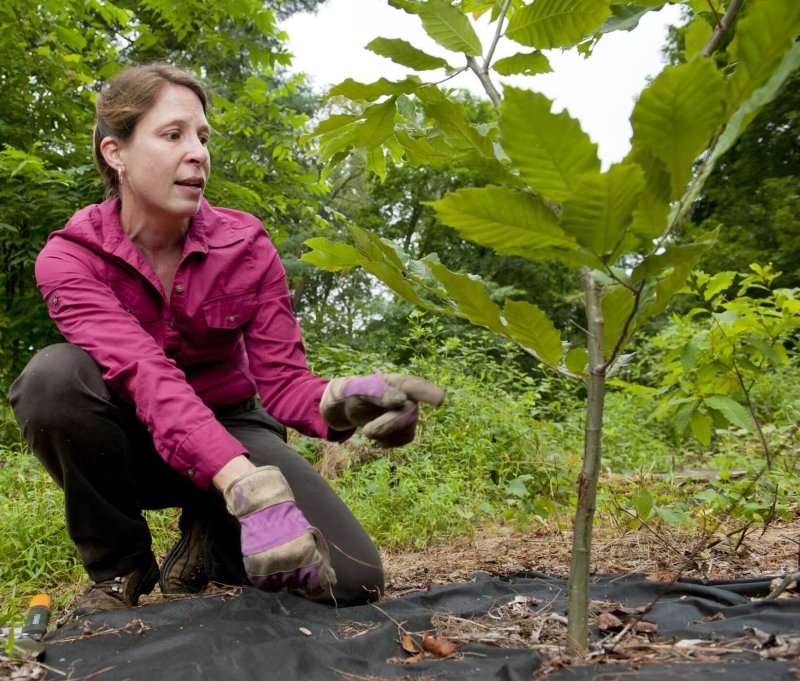Chestnuts harvested from high branches on a chilly fall morning look typical: they’re marble sized, russet colored and nestled in prickly burs. But many are like no other nuts in nature.
In a feat of genetic engineering, about half the chestnuts collected at this college experiment station feature a gene that provides resistance to blight that virtually wiped out the American chestnut tree generations ago.
Researchers at New York state’s College of Environmental Science and Forestry will soon seek federal clearance to distribute thousands of modified trees as part of a restoration effort — a closely-watched move that could expand the frontier for genetically engineered plants beyond farms and into forests. The precedent-setting case adds urgency to a question scientists have already been grappling with:
Should genetic engineering be used in the wild to help save or restore trees?
Opponents warn of starting “a massive and irreversible experiment” in a highly complex ecosystem. Proponents see a technology already ubiquitous in the supermarket that could help save forests besieged by invasive pests.
Read full, original article: High-Tech Chestnuts: US to Consider Genetically Altered Tree































